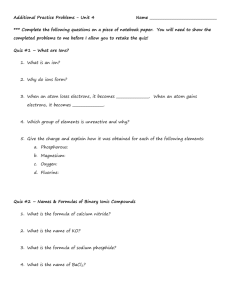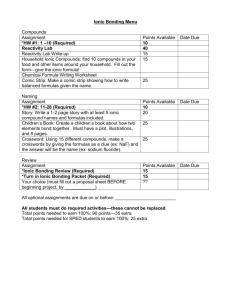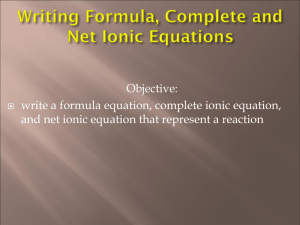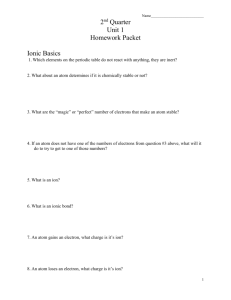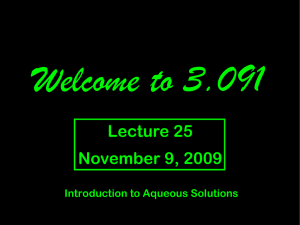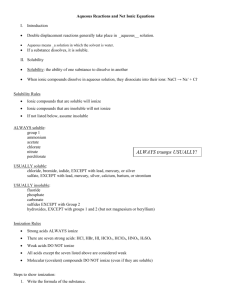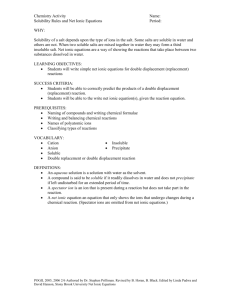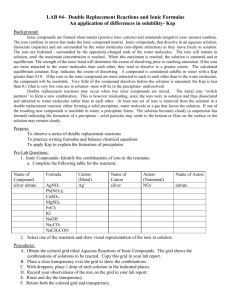Net Ionic Equation Worksheet
advertisement
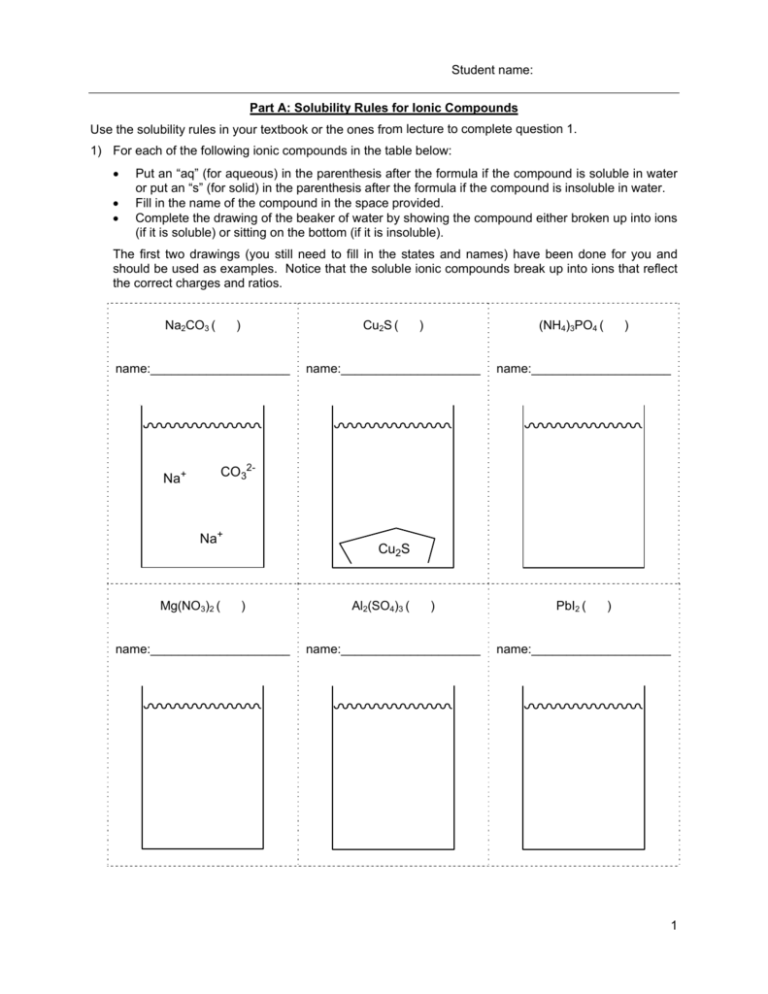
Student name: Part A: Solubility Rules for Ionic Compounds Use the solubility rules in your textbook or the ones from lecture to complete question 1. 1) For each of the following ionic compounds in the table below: Put an “aq” (for aqueous) in the parenthesis after the formula if the compound is soluble in water or put an “s” (for solid) in the parenthesis after the formula if the compound is insoluble in water. Fill in the name of the compound in the space provided. Complete the drawing of the beaker of water by showing the compound either broken up into ions (if it is soluble) or sitting on the bottom (if it is insoluble). The first two drawings (you still need to fill in the states and names) have been done for you and should be used as examples. Notice that the soluble ionic compounds break up into ions that reflect the correct charges and ratios. Na2CO3 ( Cu2S ( ) name:____________________ (NH4)3PO4 ( ) name:____________________ ) name:____________________ CO32- Na+ Na+ Mg(NO3)2 ( Cu2S ) name:____________________ Al2(SO4)3 ( ) name:____________________ PbI2 ( ) name:____________________ 1 Part B: Predicting Precipitation Reactions 2) For the following two sets of reactants: a) Predict the products; for precipitation reactions, this is done by switching the ions around and combining them in the correct ratio. Indicate if each species is soluble (aq) or insoluble (s) in water. Balance the reaction. Name each reactant and product. Draw pictures that represent the reaction (they should be like the ones you drew for question 1). _____ Cu(C2H3O2)2 ( ) + _____ Na2CO3 ( ) Names: + Cu(C2H3O2)2 b) _____ NiSO4 ( Na2CO3 ) + _____ (NH4)2CO3 ( products ) Names: + NiSO4 (NH4)2CO3 products 2 Part C: Writing Net Ionic Equations 3) Aqueous solutions of lead(II) nitrate and sodium iodide react to form a precipitate. Answer the follwing questions with regard to this reaction. a) Write the molecular equation for this reaction by: Translating the two reactants into their chemical formulae. Predict the products. Label all the states. Balance the reaction. b) Starting with the molecular equation you came up with in question 3a, write the complete ionic equation by breaking up all of the (aq) compounds into their corresponding ions; leave all of the (s) compounds together. c) Starting with the complete ionic equation that you came up with in question 3b, write the net ionic equation (NIE) for this reaction by cancelling out all of the spectator ions. 3 4) Aqueous solutions of iron(III) bromide and ammonium carbonate react to form a precipitate. Answer the follwing questions with regards to this reaction. a) Write the molecular equation for this reaction by: Translating the two reactants into their chemical formulae. Predict the products. Label all the states. Balance the reaction. b) Starting with the molecular equation you came up with in question 4a, write the complete ionic equation by breaking up all of the (aq) compounds into their corresponding ions; leave all of the (s) compounds together. c) Starting with the complete ionic equation that you came up with in question 4b, write the net ionic equation (NIE) for this reaction by cancelling out all of the spectator ions. 4


